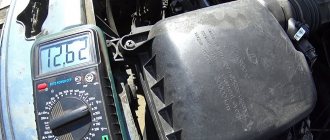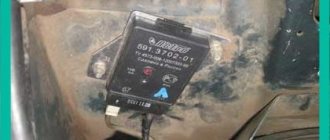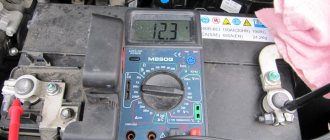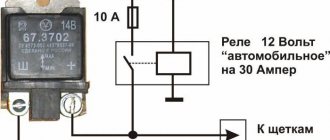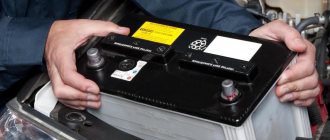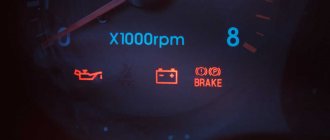Every malfunction has causes that should be anticipated. If the battery dies overnight for the first time, the equipment owner may have made a mistake. But if waking up the engine in the morning is often a bleak event, you need to examine the networks, generator and battery. Special requirements are placed on battery operation in harsh winters. Without special preparation of the car, during the night in frosty temperatures of -30 0, sometimes even a new battery runs out.
What to do if the battery dies overnight
Before starting the study, you must fully charge the battery from the network station. If you have a hybrid or low-maintenance device, you need to measure the density of the electrolyte in the banks and its level. It is necessary to add distilled water to the elements if its level is less than the norm of 1.2-1.5 cm, followed by recharging. The maintenance-free sealed battery is easy to recharge.
The reasons why a car battery dies overnight can be:
- The battery does not hold a charge - it was discharged to zero, it was frozen, it was old;
- problems in the generator;
- any device that consumes current is faulty;
- operation at low temperatures;
- not turned off at night, one of the consumers is in sleep mode, except for the alarm and remote control.
Under normal conditions during idle periods, energy consumption should be less than 0.05 A, all large losses are parasitic.
Where to look for the reason?
- You should not immediately dismantle the generator, it is in vain. Carry out diagnostics in the brush compartment on the generator. If there are visual defects or sticking, replace with new ones and test the car. If the cause cannot be eliminated, proceed to the next step;
- Diode bridge:
it is not subject to partial replacement or maintenance, only complete replacement. At the same time, check to see if there is a burnout at the place where it is attached, as there may be a short to the winding in the rotor. See the article “How to check a diode bridge”; - Problems with the relay:
perhaps there is no current flowing to it due to oxidation of the contacts. It is necessary to carefully disconnect the contacts and clean them with fine sandpaper or a triangular file. Using a voltmeter, check the output voltage at the generator, first resetting the positive terminal. The standard voltage should be 14.2–14.3 V. If the voltage is less than normal, then it is necessary to disassemble the generator and look for a breakdown in the rotor and stator windings; - Another common cause of a short circuit is water getting into the generator, for example, during a drive into a puddle. After this, the car is powered only by the battery;
- A poor-quality timing belt can also cause inconsistent battery charging due to slipping. This can be corrected by tensioning it using a pry bar and a spanner. Otherwise, replace the belt. Article on the topic “Which timing belts are better?”;
- Fuses
responsible for the operation of the dashboard. To do this, you need to look at the fuse number in the operating instructions and change it to the appropriate one. If it's not in stock, be sure to purchase it.
Here, in fact, this is the end of the topic of why the VAZ 2110 battery light is on. All common causes are discussed, as well as ways to eliminate them. We hope that our recommendation article will help many drivers quickly find and fix problems, thereby extending the life of the vehicle. Let problems bother your car as little as possible. Good luck to you.
Reasons why your car battery dies overnight
There is a great temptation to install modern communication systems, climate control equipment, and powerful headlights in your car. But all these devices take energy from a generator, which is not designed for excess consumption. As a result, a car whose mileage between starts does not exceed 20 minutes does not have time to charge the battery overnight. Additional energy will be spent on signaling and circuit protection during long periods of inactivity.
The standard signal consumption is small, but there are also parasitic currents. Somewhere the old wiring is exposed and touches the body. Perhaps the device circuit is assembled incorrectly, does not turn off, and operates in sleep mode. Often the radio remains plugged in, the sound is turned off, and the device consumes current in standby mode. As a result, it turns out that the car’s battery died overnight, which is why it won’t start. Testing will help you find all sources of leakage from the on-board system, detecting losses from each source.
Safety measures when restoring battery capacity
There are a number of mandatory requirements that must be met when recharging. Otherwise, you may get injured and permanently damage the battery.
Requirements:
- When charging, the battery emits toxic volatile substances, so it is strictly forbidden to charge batteries in a house or apartment.
- Since the battery has an acidic environment in its containers, work is carried out using personal protective equipment.
- Do not charge the battery near an open fire, as explosive hydrogen gas is released during charging.
Proper use and regular monitoring of the condition of the battery can significantly increase its service life. In addition, this will help save money on repairs or purchasing a new device.
When starting from an external power source, the following safety precautions must be observed:
- Do not smoke or use fire during external starting.
- It is advisable to remove metal jewelry and items of clothing, tuck in the hanging edges of a shirt, etc.
- Make sure that the donor vehicle does not touch a vehicle with a dead battery.
- Do not touch the car body when power is applied.
Now you have all the necessary information on how to properly charge your battery without damaging it or reducing its capacity. In addition, we recommend you one effective and simple remedy that will help you avoid the most common mistakes - read the instruction manual for your battery.
Signs of a bad battery
Each battery has a service life. During this time, the electrolyte loses its activity and changes density. The lead plates and separator are destroyed, resulting in sulfation of the surface or shorting of the cans. The capacity of the cans decreases when they are frozen, the battery is completely discharged, or when the walls and plates are destroyed. You can extend the life of low-maintenance cans by rejuvenating the electrolyte, but not for long. Maintenance-free batteries are not restored when their charge is completely lost.
The electrolyte density is checked with a hydrometer after full charging in all banks at a temperature of +25 0. If the working density is 1.28 g/cm3, then a decrease of 0.01 g/cm3 means the battery charge has decreased by 5-6%.
The battery is controlled by a special load plug. The device consists of a voltmeter and load resistors complete with pin contacts. The voltage at the battery terminals without load at positive temperatures should be 12.5 -12.7 V. A decrease in voltage by 0.2 V corresponds to a loss of 20% of the charge.
Using the pin resistances of the load fork, a full load is simulated. Within 5 seconds it should not be lower than 10.2 V and not decrease. If the readings are unstable, the battery is faulty. If the reading settles at 9.6V, the battery is 25% discharged.
Car alarms
A car alarm installed outside the factory can completely discharge the battery to zero within just 2 - 3 days. So remember, friends, if there is one in the car, then do not ignore it. Check all the wires of this car alarm, follow them where they go and to which connectors they are connected. It is possible that the specialists who connected it decided to save time and took the path of least resistance, thereby violating the technology of its installation and thereby increasing the load on the battery itself. As for factory car alarms, they are considered to be of higher quality. In addition, they are installed by highly qualified specialists who will not cut corners in this regard.
The generator is not charging the battery enough
If an alarm light comes on while the engine is running, indicating a low battery charge, the cause must be sought in the generator. The generator powers the on-board networks and recharges the battery while driving to 13.6 - 14.2 V. The reasons for insufficient charging may be due to a mismatch between the power of the generator and the increased battery capacity. If there are many consumers in the on-board system, the generator works to power them, leaving the battery on starvation. As a result, when parked for a long time, the battery is left without proper charging and by the morning it can go to zero.
Generator malfunctions:
- The selection belt is loose and a whistle is heard when starting.
- Faults in the excitation circuit - the fault is repaired by an electrician.
- The contacts are loose - it is necessary to keep the brushes and slip rings clean, tighten the bolts and nuts until they stop.
- The voltage relay is faulty.
Replacing the diode bridge
To replace the relay regulator and the rectifier unit (another name is a diode bridge), you need to disassemble the generator, first removing it from the VAZ 2110, for which you will need 13, 10 keys and a Phillips screwdriver.
To remove the generator you need to:
- Disconnect the battery terminals;
- Remove the rubber cap on the generator and unscrew the nut securing the wires with a 10 mm wrench;
- Pull out the connector;
- Loosen the tension mechanism nut, unscrew the tension bolt and remove the bracket;
- Move the generator with the mounting tool, loosen the belt and remove it;
- Using a 13mm socket, unscrew the 3 bolts from below and remove the generator along with the lower bracket.
For further work, the back cover is removed; it is held in place by 3 plastic latches. Use a Phillips screwdriver to unscrew two screws and remove the relay combined with the brush assembly. To remove the rectifier unit, you need to unscrew the 4 screws securing it and the capacitor, as well as the ends of the windings.
The relay can only be replaced as a whole; there are several models on sale, even with a “summer-winter” switch for selecting the output voltage. It is also better to replace the diode bridge as an assembly.
Current consumption of service on-board devices, parasitic currents
If all on-board internal and external consumers are in working order, the connection diagram is assembled correctly, they are completely disconnected from the network, and do not remain in sleep mode. Measurements with connected alarm, blocking and contactless immobilizer do not exceed the total consumption of 0.05 - 0.07A. With this consumption, even in winter, the battery will cope with starting the engine in the morning.
If a leak is detected, it is necessary to conduct a full diagnostic of devices and instruments powered from the on-board power supply. The reason may be incorrect connection of service equipment or powerful multimedia systems. Even a complex gadget power supply circuit can cause parasitic losses.
On a note
Daily discharges to zero kill the battery. It is better to prevent illness than to put up with the fact that the battery quickly loses its charge when driving a car. If a moment of intense discharge occurs, it is useful to identify it and refrain from cranking the starter again.
What to do to prevent the battery from draining quickly
- Charging with a low current (about 1-2 A) prevents the initial sulfation of the plates. Connect the charger once a month at night and a regular battery will last 5-6 years without problems, and an AGM or EFB battery will last even longer.
- Learn how to properly store your battery in the garage and at home. When parked in the cold for more than a day, remove the power source and bring it into a warm room (no more than +25°C).
- Regularly clean the terminals on the car and the down conductors on the power source with a special brush for battery terminals (pictured) or a simple sandpaper. Oxides cause undercharging.
- With the arrival of cold weather, recharge the product more often to 100% with normal current (10% of capacity).
- Keep the outer surface of the battery clean. You can wipe with a 10% solution of ammonia and soda ash, then wipe dry.
- If the battery is serviceable, clean the holes in the lids of the cans with a thin wire. Check the electrolyte level before charging. Standard: +10…15 mm from the safety shield. Compare the density of the electrolytic fluid with the voltage.
- Periodically test the on-board network for current leaks.
How to find out if the battery is almost discharged
By load. Both methods for checking the battery upon purchase and ordinary observation are relevant:
- The starter barely turned the engine shaft.
- When you turn on the heated seats/windows or headlights, the radio turns off.
If the battery, fully charged the day before, suddenly refused to turn the starter, then keep in mind that a voracious consumer has entered the on-board network. Without the slightest idea about electricity, it is better to entrust its search to the service station masters. To avoid getting scammed, please note: a friendly technician will definitely ask a few questions about electrical equipment. For example, were the lights turned off at night, or was the radio changed? Well, those who are familiar with a multimeter can do it on their own, and the editors of Autostadt.su will tell you what and how.
Features of winter energy consumption from the battery
An undercharged battery during a long period of inactivity in cold conditions will self-discharge faster, losing capacity. It is dangerous if the electrolyte with insufficient density freezes. A calcium battery may not recover after a one-time icing. If batteries often run low, they lose their ability to heal themselves. Why does the battery often die overnight in winter? In winter, recharging is slower and capacity losses become significant. It takes more effort to start equipment with thickened lubricant. As a result, the danger of running the battery to zero in winter increases many times over.
In cold weather, it is necessary to monitor the battery charge level more often. To restore capacity, the movement must be intense, with a small amount of downtime with the engine turned off. The battery or engine compartment must be insulated, retaining the residual heat of the engine for as long as possible.
Acting
A fairly common situation in the modern automotive world: on cars with a “start-stop” mode, instead of an expensive AGM battery, a regular “plebek” is installed. The reason, as a rule, is one: poverty, less often - the greed of the owner. If he turns off the start-stop mode every time, then the battery will, of course, last for some time, but in real situations no one usually does this. And since a simple battery is not designed for deep discharges, it can die much earlier than its intended date. Therefore, at the first signs of the “blues”, the owner must understand: most likely he has already ruined the poor battery...
We invite everyone who wants to share their methods of assessing the residual battery life to do so!
If the battery in a VAZ car dies overnight
Often it is the owners of VAZ cars who complain that the battery runs out overnight in the cold. The most common cause is poor contact. Large currents in the generator, starter, and battery circuits lead to local heating at the slightest violation of the connections. Violation of the density of connections leads to oxidation of wires, increased resistance, and excessive voltage drop. Connections and contacts must be thoroughly cleaned, mounting bolts and nuts must be tightened.
Another typical reason why the battery dies overnight is its chronic undercharging from the car’s generator. Modern on-board systems use a large amount of energy; the generator does not have enough power to recharge the battery, especially on trips of less than 20 minutes.
Units and design details
The function of the starter is to start the car engine by spinning its flywheel with an electric motor, creating temporary contact between the gears. Subsequently, the electric motor is turned off and physical contact with the flywheel gear is broken. The starter is located on the engine body closer to the battery and the cab.
Structurally, the device can be divided into two functional blocks:
After starting the engine, the key is returned from the ignition position, de-energizing the relay. The relay opens the contacts, the spring returns the bendix to its original state. When starting, the electric motor requires several tens of amperes of current from the battery. After starting the car engine, the generator restores the battery charge.
Winding destruction
It is not very pleasant if the excitation winding is suddenly destroyed. If such a malfunction is present, the generator will not work completely, since there is no magnetic field. The fact is that the operating principle of any generator is based on the presence of a moving magnetic field. This malfunction can be identified very simply. Firstly, if you touch the generator housing during operation, it will turn out to be too hot. Secondly, a light with a battery drawn on it will definitely light up on the dashboard. It indicates that the battery is not charging. You can also use the multimeter in resistance measurement mode. To do this, you need to measure the resistance value between the rings. But these are not all the reasons why the generator does not charge well.
Driver errors
When preparing your car for the night, you need to make sure that all devices are turned off. Any energy consumer can completely discharge the battery overnight. We invite you to watch a detailed video study of why your car battery dies overnight.
Good day, dear friends! There is probably no car enthusiast who has not found himself in an unpleasant situation due to a dead battery at the most unnecessary moment. With a discharged battery, the car becomes practically useless, except perhaps for shelter from the rain. Again being late for work or some important meeting, frayed nerves. Yes, you can accidentally forget and leave the radio or headlights on, but what if this happens through no fault of the driver?
The battery (car battery) is an important element of the vehicle's energy system. Without it, the car simply won’t start, because it is the battery that powers all the electronic components of the car. This device consists of six two-volt elements, which, together, produce 12 volts. The internal elements of the battery are made of lead plates coated with a special substance and immersed in electrolyte. All this generates electric current. The battery in a car performs the following functions:
- Starts the engine;
- Helps the generator cope with the load placed on it;
- Allows electrical appliances to operate when the engine is turned off.
Stator problems
Similar problems can arise in stator windings. In particular, if there is an interturn short circuit, the battery will not charge. Of course, the generator can work, but in emergency mode. Firstly, its power will drop significantly. Secondly, the batteries will not be charged. Thirdly, excessive heating of the generator housing occurs. The winding may also short-circuit to the housing. Excessive heating, humming, loss of power - all those signs that are inherent in rotor winding failures. The check is carried out in the same way as in the case of a rotor winding. To carry out repairs, it is necessary to replace all faulty coils. It even happens that in generators the positive terminal is closed to the housing. Consequently, a short circuit also occurs between the terminals of the battery. This poses the risk of a fire. Of course, the generator does not charge in this case.
